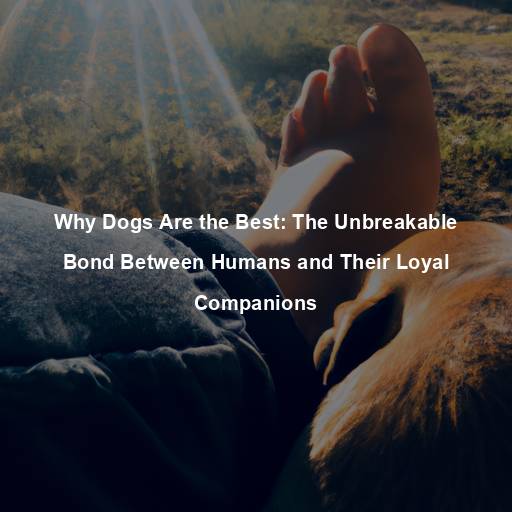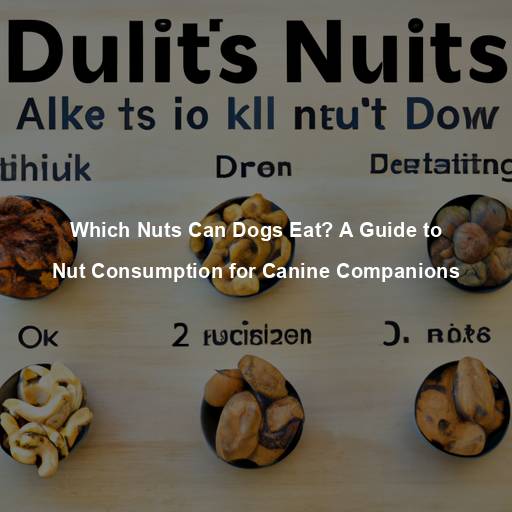Which Dogs Can Kill You?
Last Updated on August 1, 2023 by Evan
Contents
- 1 Understanding the Potential Dangers of Certain Dog Breeds
- 1.1 Factors Influencing Dog Behavior
- 1.2 Breeds with a History of Aggression
- 1.3 Understanding the Role of Responsible Ownership
- 1.4 The Importance of Breed-Specific Legislation
- 1.5 Misrepresentation in the Media
- 1.6 The Role of Individual Temperament
- 1.7 Responsible Ownership and Prevention Measures
- 1.8 The Importance of Early Intervention
- 1.9 The Need for Comprehensive Dog Bite Statistics
- 1.10 Encouraging Responsible Breeding Practices
- 1.11 Understanding the Controversy
- 1.12 Assessing the Effectiveness of BSL
- 1.13 Alternatives to BSL
- 2 FAQs – Which Dogs Can Kill You
- 2.1 Are there certain breeds of dogs that are more likely to kill a human being?
- 2.2 Why might a dog exhibit dangerous behavior towards humans?
- 2.3 How can I protect myself from a potentially dangerous dog?
- 2.4 Is it possible to predict if a dog might exhibit aggressive behavior towards humans?
- 2.5 What should I do if I encounter a dog that poses a threat to my safety?
- 2.6 Are all dog attacks fatal?
- 2.7 How can I help prevent dog attacks in my community?
Understanding the Potential Dangers of Certain Dog Breeds
In homes around the globe, dogs have earned their reputation as faithful and affectionate companions, enriching the lives of countless families with their boundless joy. Nevertheless, it is imperative that we confront a distressing reality; there are certain dog breeds whose capabilities for danger and even tragedy should not be ignored. While it is essential to avoid tarring all breeds with the same brush, delving deep into the innate characteristics and behavioral tendencies of specific dogs can serve as a cautionary measure in averting unfortunate incidents. Join us in this enlightening exploration as we shed light on the dogs that may pose a potential threat to human safety, unraveling the enigmatic factors that contribute to their perplexing conduct.
Factors Influencing Dog Behavior
When exploring the world of dog breeds, it’s important to acknowledge the multitude of factors that shape a dog’s behavior. From genetics and upbringing to training and personality, the interplay of these elements creates a unique canine identity. While it’s tempting to rely on breed-specific stereotypes, it’s vital to embrace the individuality of each dog. By cultivating a safe and nurturing environment, providing proper training, and fostering socialization, the potential risks associated with certain breeds can be effectively managed.
Breeds with a History of Aggression
While aggression in dogs is not exclusive to any particular breed, certain breeds have historically displayed a higher propensity for aggression. It is essential to approach these breeds with caution and respect, recognizing that responsible ownership and proper training are vital for managing their behavior.
- Pit Bull Terrier: The term “Pit Bull” encompasses several breeds, including the American Pit Bull Terrier, American Staffordshire Terrier, and Staffordshire Bull Terrier. Pit Bulls have gained a reputation for being potentially dangerous due to their strength, tenacity, and history in dogfighting. However, it is important to note that individual temperament varies within the breed, and many Pit Bulls are loving and gentle when properly cared for and trained.
Introducing the formidable Rottweiler – a breed characterized by their immense strength and unwavering dedication to guarding their loved ones. Their protective instincts are deeply ingrained, but without proper training and socialization, their territorial tendencies can manifest as aggression. To ensure harmonious coexistence, it is essential for responsible owners to invest time and effort into early socialization and comprehensive training. By nurturing their potential with care and patience, the Rottweiler’s enigmatic nature can flourish into a loyal and well-adjusted companion.
-
German Shepherd: German Shepherds are known for their intelligence, loyalty, and versatility. However, their protective instincts can manifest as aggression if not channeled correctly. Proper training, socialization, and consistent leadership are essential for German Shepherds to ensure their behavior remains stable and predictable.
-
Doberman Pinscher: Dobermans are highly intelligent and energetic dogs that require significant mental and physical stimulation. While they are loyal and trainable, their protective instincts can make them potentially dangerous if not properly managed. Adequate socialization and training are crucial to keeping them well-behaved and balanced.
Understanding the Role of Responsible Ownership
When it comes to dealing with dogs, it’s no secret that some breeds have a reputation for being more prone to aggression. However, let’s not jump to conclusions and instead focus on the bigger picture – responsible dog ownership. It cannot be emphasized enough how crucial it is to create a safe environment for both humans and furry friends alike. To achieve this, here are some essential guidelines that all dog owners, regardless of their dog’s breed, should adhere to.
Discover the secrets to nurturing a well-rounded pup through early socialization! Delve into the enchanting world of introducing your furry friend to a diverse tapestry of people, animals, and environments. Witness the magic unfold as your canine companion forges lasting bonds and cultivates a harmonious demeanor, while minimizing the potential for fear-based aggression. Embark on this adventure of discovery and enable your four-legged friend to thrive in a vibrant and ever-changing world.
-
Proper Training: Enroll your dog in obedience classes or seek professional guidance to ensure they learn basic commands and appropriate behavior. Consistent and positive reinforcement methods are essential for fostering a well-behaved dog.
-
Supervision: Always supervise your dog around children, strangers, or other animals. This minimizes the risk of any potential altercations and allows you to intervene if necessary.
When it comes to safeguarding your furry companion and maintaining control over their whereabouts, investing in a reliable and secure fencing system is paramount. By having a sturdy barrier surrounding your property, you can effectively prevent your beloved dog from not only straying away but also encountering potential threats or unfamiliar individuals or creatures that may pose a risk. Leaving no room for uncertainty, this prudent measure guarantees peace of mind and facilitates a harmonious coexistence between your four-legged friend and the world beyond your control.
- Spaying or Neutering: Consider spaying or neutering your dog, as this can help reduce aggression and territorial behaviors.
The Importance of Breed-Specific Legislation
Controversial and subject to fiery debates, breed-specific legislation (BSL) is a set of regulations that take aim at specific dog breeds believed to pose a potential threat. Intended to safeguard public well-being, these laws have become a hot topic among both canine experts and avid dog lovers. The issue polarizes opinions, leaving no room for consensus or easy solutions.
There exists a long-standing debate surrounding Breed-Specific Legislation (BSL), with those in favor maintaining that it provides an added safeguard through its limitations on ownership and enforcement of strict criteria for potentially hazardous breeds. Nonetheless, adversaries claim that BSL lacks efficacy by fixating on breed rather than individual conduct, consequently resulting in the unfounded prejudice against particular breeds and responsible dog guardians. The intricate nature of this discussion has left both sides perplexed, with no clear-cut resolution in sight.
In the realm of dog regulation, a delicate equilibrium must be achieved, where the well-being of the public intertwines with the equitable treatment of all canine breeds. Rethinking our approach to laws centered solely on specific breeds is imperative, as it veers towards a more nuanced trajectory. Prioritizing the cultivation of responsible dog guardianship, education initiatives, and the enforcement of prevailing regulations concerning aggressive dogs will prove more fruitful in preserving harmony and safety in our communities.
Misrepresentation in the Media
Media outlets, including news reports and popular culture, have often sensationalized stories involving dog attacks, focusing on specific breeds rather than examining the underlying factors contributing to the incidents. This selective reporting has fostered a biased perception of certain breeds as inherently dangerous, leading to stigmatization and misinformation.
The Role of Individual Temperament
While breed characteristics can provide insights into a dog’s behavior, it is crucial to remember that individual temperament plays a significant role. Dogs, like humans, have unique personalities that can vary within a breed. Generalizing an entire breed based on the actions of a few is unfair and unjust.
Responsible Ownership and Prevention Measures
In the realm of canines, responsible ownership reigns supreme when it comes to averting untoward incidents and safeguarding the well-being of society. Fostering a sense of duty towards our furry companions, pet enthusiasts must make it their prime focus to embrace preventive measures that can make a world of difference. By making conscious efforts to prioritize these measures, such as training, socialization, and proper containment, dog owners can build a harmonious coexistence between man and beast, paving the way for a tranquil and secure public realm.
Socialization and Training
Early socialization and obedience training are vital for all dogs, regardless of breed. By exposing them to various environments, people, and animals, we can help them develop positive associations and reduce the likelihood of fear-based aggression. Consistent and positive reinforcement methods should be used in training to foster well-behaved dogs.
Identification and Licensing
Ensuring that all dogs are properly identified with tags and microchips can help hold owners accountable for their pets’ behavior. Licensing requirements can also help authorities keep track of potentially dangerous dogs and ensure that responsible ownership is promoted.
Education and Awareness
Community education programs can play a crucial role in raising awareness about responsible dog ownership, dispelling breed stereotypes, and promoting safe interactions between dogs and humans. By providing accurate information and resources, we can empower individuals to make informed decisions and foster a more harmonious relationship between dogs and society.
The Importance of Early Intervention
Recognizing and proactively dealing with potential signs of aggression or troublesome conduct can greatly diminish the likelihood of untoward occurrences. It’s crucial for pet guardians to promptly seek expert advice upon witnessing any disconcerting conduct in their canine companions. Accomplished behavior specialists are adept at examining the root causes and offering tailored tactics for effectively managing and transforming behavior.
The Need for Comprehensive Dog Bite Statistics
To gain a clearer understanding of dog-related incidents, it is crucial to collect comprehensive and accurate data on dog bites. This data should include information on the circumstances surrounding the incidents, the behavior of the dogs involved, and the owners’ level of responsibility. By analyzing this information, policymakers and experts can develop targeted strategies to prevent dog bites and promote responsible ownership.
Encouraging Responsible Breeding Practices
Irresponsible breeding practices can exacerbate behavioral issues in dogs, leading to potential aggression. Promoting responsible breeding practices, including health testing and temperament evaluations, can help reduce the likelihood of inherited behavioral problems. Responsible breeders prioritize the well-being and temperament of their dogs, ensuring that they are suitable for family environments.
Understanding the Controversy
Opponents of BSL argue that it is an ineffective approach to addressing dog-related incidents. They point out that focusing on breed alone fails to consider individual temperament, responsible ownership, and other factors that contribute to a dog’s behavior. Stigmatizing specific breeds can also lead to discrimination against responsible owners and well-behaved dogs.
Assessing the Effectiveness of BSL
It’s a hot topic that has left experts scratching their heads: the effectiveness of breed-specific legislation (BSL). While researchers have been busy investigating its impact on dog bite incidents and public safety, the results have been anything but definitive. Some studies suggest that BSL hasn’t made a significant dent in reducing dog bites or improving overall safety, leaving us perplexed. In fact, these laws might inadvertently be leading to unforeseen consequences, like an uptick in the ownership of unregulated and potentially more dangerous breeds.
Alternatives to BSL
In the ever-evolving discourse on dog bite prevention and public safety, a chorus of experts is now championing a more nuanced and holistic strategy. Shattering the confines of breed-specific legislation, this multifaceted approach embraces diversity and complexity, igniting a fresh perspective that seeks to address the issue from various angles. As a breath of fresh air in this perplexing landscape, these forward-thinking minds believe that it is high time to transcend the single-dimensional approach and navigate the labyrinth of possibilities with an open mind. By incorporating a tapestry of strategies, which include education, responsible ownership, and community engagement, the goal is to foster a harmonious coexistence where both humans and their canine companions can thrive.
Education and Responsible Ownership
Understanding and respecting canine behavior, along with responsible ownership and diligent training, hold the key to minimizing the likelihood of incidents. Educating people on how to forge secure bonds with their furry companions creates a harmonious environment that cultivates empathy and compassion. By championing these principles, we pave the way for a safer and more loving society for both humans and our loyal four-legged friends.
Enforcement of Existing Laws
In this tumultuous world we live in, where chaos and uncertainty seem to loom over us like dark storm clouds, it is imperative that we cling onto the lifelines of safety and order. The enforcement of laws pertaining to dangerous dogs, leash requirements, and anti-cruelty regulations shines like a beacon of hope amidst the perplexity. By embracing the notion of holding owners accountable for their beloved pets’ actions, we can pave the way towards a harmonious coexistence, where irresponsible behavior is met with consequences, and responsible pet guardianship is praised and encouraged.
Focus on Individual Behavior
Instead of unfairly singling out certain breeds, it’s crucial for policies to shift their focus towards understanding and addressing the behavior of individual dogs. By conducting thorough behavior assessments, we can identify those who may exhibit aggressive tendencies. This allows us to provide tailored training and necessary restrictions, ensuring a more effective approach in preventing unfortunate incidents triggered by misunderstandings between dogs and humans.
Community Involvement and Collaboration
In a world where dog-related incidents continue to perplex and concern communities, there is a need for fresh, out-of-the-box thinking. By fostering a burst of collaboration between local animal control agencies, devoted veterinarians, tireless rescue organizations, and visionary community leaders, we can weave together a safety net that addresses the very root causes of these incidents. Through engaging and empowering communities, we can create a cohesive network of support and resources that will not only protect our furry friends but also promote harmony among humans and canines alike.
FAQs – Which Dogs Can Kill You
Are there certain breeds of dogs that are more likely to kill a human being?
No specific breed of dog can be categorized as more likely to kill a human being. It is essential to understand that a dog’s behavior and temperament are primarily influenced by several factors, including their training, socialization, and individual characteristics. Aggression and dangerous behavior can be found in dogs of any breed, size, or mix. It is crucial to consider each dog as an individual and not rely solely on breed generalizations.
Why might a dog exhibit dangerous behavior towards humans?
When it comes to dogs displaying aggression towards humans, it’s important to understand that there are multifaceted factors at play. From a lack of socialization in their formative years to the lasting impact of past traumatic incidents, various elements contribute to this perplexing behavior. Additionally, factors like abuse, neglect, genetic predisposition, and even underlying health concerns can contribute to this burst of aggression. It’s crucial to remember that not all dogs possess an inherent tendency towards aggression, but rather, it arises in specific circumstances.
How can I protect myself from a potentially dangerous dog?
To protect yourself from a potentially dangerous dog, it is vital to follow certain guidelines. First, it is important to approach any unfamiliar dog with caution, particularly if they are exhibiting aggressive or anxious behavior. Avoid making direct eye contact or sudden movements that could escalate their aggression. If confronted by an aggressive dog, it is recommended to stand still, avoid running, and use a firm, calm tone of voice to assert your presence. If you believe you are in immediate danger, create a barrier between yourself and the dog using an object such as a backpack or jacket, and slowly retreat to safety.
Is it possible to predict if a dog might exhibit aggressive behavior towards humans?
Determining whether a furry pal will express hostile tendencies towards humans isn’t always a walk in the park, but there are red flags that might give you a clue. Keep an eye out for frantic growling, snarling, or a menacing display of bared teeth as these are telltale signs of aggression. Moreover, if a dog jumps fiercely towards people, sports raised hackles, or possesses a track record of undirected bite incidents, it’s wisest to seek guidance from a seasoned dog behaviorist or trainer who can shed light on the matter.
What should I do if I encounter a dog that poses a threat to my safety?
If you encounter a dog that poses a threat to your safety, it is crucial to remain calm and take appropriate action. Try to avoid direct eye contact or sudden movements that may provoke the dog further. If the dog approaches you, it is recommended to stand still, avoid running, and create a barrier between yourself and the dog using an object if possible. If the dog attacks, try to protect your head, neck, and vital organs by curling into a ball and covering your face with your hands. Once the attack has stopped or you are able to escape the dog’s presence safely, seek immediate medical attention and report the incident to the local authorities.
Are all dog attacks fatal?
Being on the receiving end of a dog attack can be a terrifying experience, but it’s vital to remember that not every attack ends tragically. The intensity of the attack hinges on a multitude of perplexing factors, including the dog’s size, strength, and the traumatic location of the incident. However, seeking immediate medical help is imperative to untangle the mystery of hidden injuries and ensure proper treatment.
How can I help prevent dog attacks in my community?
You can contribute to preventing dog attacks in your community by emphasizing responsible dog ownership. Encourage proper training and socialization for dogs, as well as adequate exercise and mental stimulation. Promote leash laws and responsible dog walking practices. Educate community members about dog behavior and body language to help them recognize signs of aggression or fear. Advocate for the sterilization of dogs to help reduce unwanted litters that may exhibit undesired behaviors. By fostering a community that prioritizes responsible dog ownership, we can help reduce the risk of dog attacks and create a safer environment for both humans and animals.







